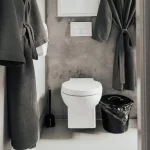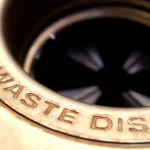Have you noticed a musty smell in the cabinet beneath your kitchen sink? Is there warping or discoloration of the floor or shelving, or signs of moisture or mildew anywhere? As problematic as the kitchen drain can be, this isn’t usually caused by a water leak. But don’t take our word for it – test it for yourself before you assume it’s a plumbing problem and spend money repairing it.
Check for Leaks
- Take a close look at the pipes in the cabinet leading from the faucet to the kitchen drain.
- Use a flashlight to check for any signs of water on or around the pipes.
- Take a dry cloth and wipe down the hot and cold water lines as well as the inside of the cabinet to make sure there is no residual moisture present.
- Line the floor or shelf below each section of the pipe with paper towels and leave them there for 24 hours.
If the towels show any dampness by the time you remove them, then you may have a water leak.
Examine Seals
Once you’ve established that none of the lines serving your kitchen drain have water leaks, it’s time to look for other reasons for the problem. Often, water in the sink splashes on the surrounding surfaces and gets in through the holes containing your faucets and other fixtures such as door handles. If these fittings are not thoroughly sealed, the water takes the path of least resistance and seeps in under the surface of the cabinet top. Seal the entry points around the fittings with a squirt of silicone sealant, in the same color as your cabinet.
Replace Gaskets
Many of the fittings and fixtures for your kitchen come with rubber gaskets, which get worn and inefficient over time. If your inlet pipes or the outlet to the kitchen drain have valves, these also have rubber seals or gaskets that may need replacement. Check to see if the gaskets are an even thickness, or if they have become thinner in some places. If so, this could be the source of the moisture and you can repair this by replacing the gasket or using a silicone sealant around the joint.
Know When to Call for Help
While it’s simple enough to add a squirt of sealant around a faucet or the sink itself, it’s not wise to try replacing the gaskets in valves unless you know what you are doing and have the right tools for the job. Once you’ve determined the source of moisture, call your local plumber if any valves or gaskets need changing, or the actual kitchen drain requires attention. When the problem has been resolved, leave the kitchen cabinet open for 48 hours and place a portable fan in front of it to help dry out the mildew.
For more information on getting rid of mildew in your home, contact your local plumber today for advice, free inspection or an estimate for your needs.






